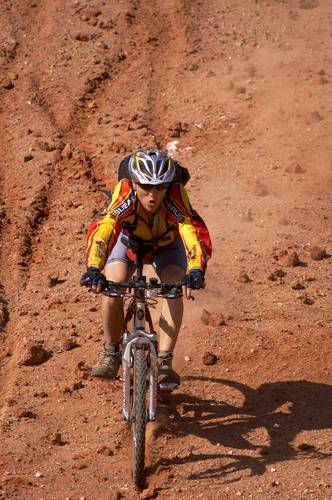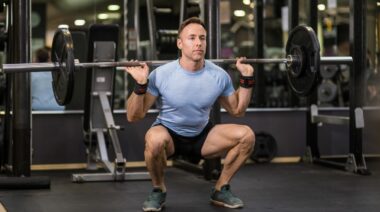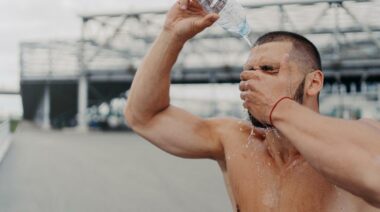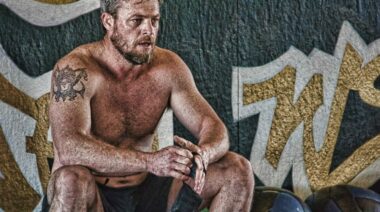After months of careful preparation during the winter and spring, the cycling race season is often a busy time, going from event to event. But despite the schedule, I think there are some real advantages to training during the race season. As always, the type of training that you do makes a difference, and what happens in between events can have an impact on both your results and your enjoyment.
Training means a lot of things. For me, the most important aspect of training is that it has some specific target in mind and the activities or exercises are aimed at meeting that target.
Appropriate training during the season can offer a number of benefits such as:
- Arriving at your key events fully prepared and in top condition.
- Recovering from previous events quickly.
- Extending the season.
I find that in-season training is most beneficial when I focus on two areas – recovery between events (mostly in the form of mobility work) and specific skill training session.
Recovery Between Events
Completion of an event at maximum effort can leave the body feeling tired and sore. So the first part of your training should be to ensure that your body recovers quickly. Riding a cycle requires being in a flexed position for some time. Restoring full range of movement is important for posture and also to avoid shortening muscles, which can be both uncomfortable and cause you to become injured during future events.
As I mentioned in a previous article, I like to take each part of the body through all its planes of motion, starting off gently at the shoulders. After the shoulders, I work on the back. The lumbar and thoracic areas will have been flexed during cycling and so taking the back gently into extension and lateral flexion will help restore motion. Then, I move up to the neck, which is often extended to look forwards. And I complete the mobility work by opening up the hips and working on the ankles.
Performing the motions in the next few paragraphs will restore your full range of movement. Perform each motion in these sequences a few times.
Shoulder mobility:
- Swing the arms up in front, overhead and then behind.
- Swing the arms across the body horizontally.
- Swing the arms out sideways and overhead.
- Holding the arms out sideways rotate the arms clockwise and anticlockwise.
- Holding the arms out sideways swing the arms in small circles and gradually increase the size to maximum.
- Shrug the shoulders and them pull them down.
- Pull the shoulders forwards and then backwards.
- Move the shoulders in circles each direction.
Back mobility:
- Gently raise both arms overhead and clasp the hands together. Perform this a few times, each time stretching out a little taller and leaning slightly backwards. You may find that placing one foot behind the other helps to keep balance.
- Raising both arms overhead again, sway the body side to side.
- Then, raising the arms out front and holding each elbow rotate the upper body from side to side.
Neck mobility:
- Standing upright and only using the neck muscles (no forcing with the hands), move the head to an upright position.
- Gently tuck the chin in, looking down.
Hip mobility:
- Lunge backwards on each leg in turn taking the hips into extension.
- Bring the back leg forward to raise the knee high. The lunges will also flex and extend the knees.
- Standing on one leg (using a wall for support if necessary) raise the non-support leg out sideways and swing across the front of the support leg. Then swing the non-support leg in small circles out to the side.
- To take the hips out sideways in another plane stand on one leg again (using a support if necessary) raise the opposite knee so that the thigh is horizontal and then rotate the knee out to the side before lowering the leg.
Ankle mobility:
- Stand on one leg again, or you can do this seated.
- Move the ankles in small circles in each direction.
- Gradually increase the size of the circles.
Skill Development
Skill development is also a topic that can be successfully developed during the season. This is a good opportunity to review what has happened in recent events to determine where to focus future efforts. This could be in any number of areas depending upon which discipline or event is coming up. Examples include:
 Starting response time. If you compete in sprint events, you can practice your start response.
Starting response time. If you compete in sprint events, you can practice your start response.- Group riding skills. Try to find a friend that might to help with this. Alternatively use an event or group as practice training rather than be concerned about the result. Be careful that this doesn’t tire you out for the next event. Track training evenings are a good way to develop this without having to ride several miles.
- Road bike handling skills. Work on things like cornering, descending, and braking.
- Mountain bike handling skills. Again aim for cornering, descending, and braking, as well as off camber, root sections, roll-offs, jumps, and switchbacks. These can all be practiced in small focused doses that assist with the skill development without creating fatigue before the next event.
- Time trial bike position. Checking your position using a mirror or video camera on a tripod is a great way to evaluate this. Any adjustments you make should be small so that you have time to adapt over the coming weeks. Team time trial change-over routines can also be rehearsed with your race partners(s).
- Cyclo-cross skills. You could rehearse bike mount and dismounts or riding across different types of surface such as sandy soils.
Photos courtesy of Shutterstock.






